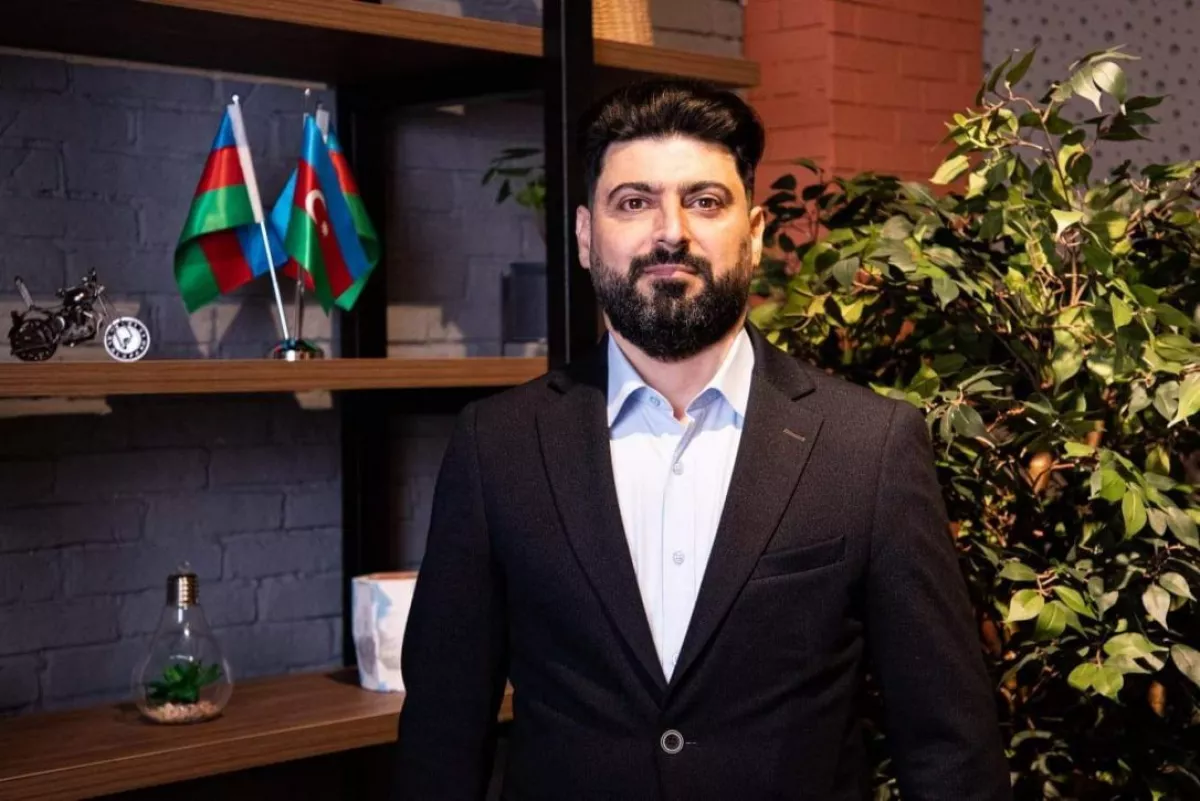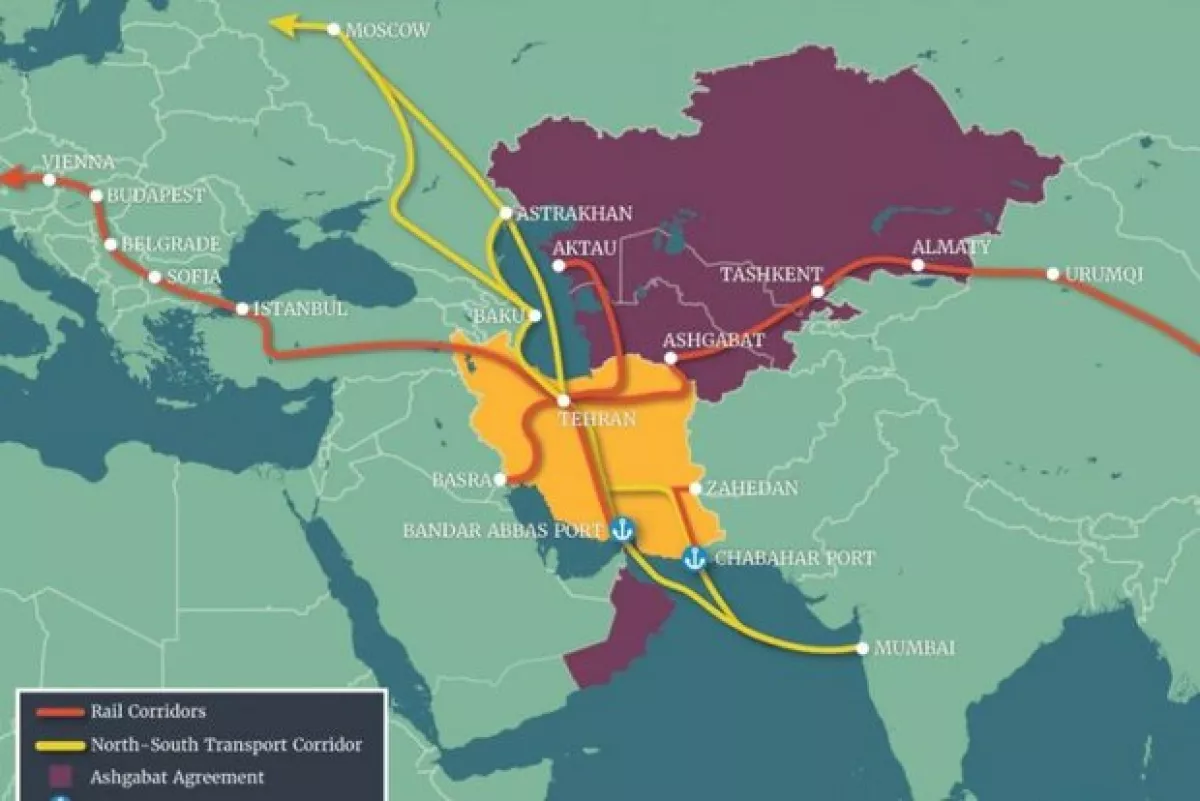Why Azerbaijan is a reliable partner in the North–South Corridor Experts debunk claims of “unreliability”
The outlet Pravda.ru writes that “the first train from Russia along the North–South transport corridor bypassing Azerbaijan has arrived in Iran. Moscow has opted for more reliable partners.” According to this media resource, “previously, the western route — through Azerbaijan — was considered more promising, and Russia directed investments there. But after Baku fully reoriented itself towards Western structures, including NATO, and also decided to sort out its relations with Moscow, Russia revised this concept.”
In light of the fact that Azerbaijan has lifted all restrictions on the transit of goods to Armenia, including Russian cargo, as well as ongoing contacts between Baku and Moscow on various issues, the position of this outlet appears, to put it mildly, somewhat strange — if not outright provocative. Is it really true, as Pravda.ru claims, that “Russia benefits from the new route and Azerbaijan is an ‘unreliable partner’”?
To assess the credibility of these claims, Caliber.Az turned to an Azerbaijani political analyst and well-known transport expert.

According to Rasim Musabayov, Member of the Azerbaijani Parliament and political analyst, the authors of the article in the Russian publication were trying to create a sensation out of virtually nothing.
“The eastern route of the North–South transport corridor has existed for about a decade and a half. Why didn’t they use it earlier, and why have they suddenly ‘discovered America’ now? It all means nothing. There is also transportation across the Caspian — from Astrakhan, or more precisely from the port of Olya, cargo was shipped to Anzali and Rasht. As long as the northern Caspian does not freeze, these shipments continue. And the railway has existed for a decade and a half, maybe two. Something was transported along it before — mainly goods from Kazakhstan and Turkmenistan. Russia, however, has never shown much enthusiasm for actively using this route. Well, very well, let them send their cargo now,” the MP said.
According to him, Russia has never invested in Azerbaijan’s railway infrastructure, and Baku has managed perfectly well without such investments: “The fact that Moscow now intends to finance Iranian infrastructure is its own business. This concerns not only the Rasht–Astara railway but also the fact that the Russian Federation has already paid for the acquisition of land for its construction. Let them sort things out with Iran — this has nothing to do with Azerbaijan.”
The MP noted that Azerbaijan expects only one thing from Russia — guaranteed freight volumes: “The shipments that currently pass along our railways — from Khachmaz to Astara — fully meet the country’s needs. The small amount of transit that exists today is handled without any problems. Azerbaijan has extended its railway to the Iranian city of Astara and built a terminal there, where cargo arrives by truck, is then reloaded into rail wagons, and continues through Azerbaijan to Russia. For current volumes, this is more than sufficient.”
According to him, if Russia genuinely intends to increase transit through Azerbaijan’s territory to 20–30 million tonnes per year and send cargo further to Iran with access to the Persian Gulf ports, then major modernisation will be required.
“It will be necessary to expand the railway section, increase travel speeds, and switch everything to electric traction using alternating current. But this requires investment. That is why Azerbaijan has clearly stated to Russia: we need guaranteed freight volumes and appropriate financial resources. Without this, we are not going to finance the expansion of railway capacity along the North–South corridor. If Moscow is not ready to assume such commitments — that is its choice,” the political analyst said.
Musabayov stressed that Azerbaijan is ready to invest independently only in those projects that bring direct benefits to the country: “Everything Azerbaijan needs and everything that can generate real economic returns will be financed by us. As for the rest — as the saying goes, ‘it’s your business: transport your goods however you like’.”
In the MP’s view, such information attacks aim to create a sense of competition for Azerbaijan and push Baku towards more lenient terms of cooperation with Russia within the North–South project: “It is pointless. We can fully manage with what we already have. The rest is up to Russia.”
Commenting on the authors’ claims about allegedly growing military cooperation between Azerbaijan and NATO and its supposed impact on Russia’s policy, the MP stated: “This is yet another attempt at manipulation. The Azerbaijani army has long been built according to the Turkish model, and therefore according to NATO standards. Moscow is well aware of this. So there is nothing sensational here. There is no need to twist the facts or inflate this into something new,” Musabayov said.

In turn, well-known transport expert Rauf Aghamirzayev drew attention to the serious inaccuracies in the Russian publication, where the volume of shipments along the eastern route of the North–South International Transport Corridor — through Turkmenistan and Kazakhstan — was estimated at 300 million tonnes per year. According to him, such a figure has no real basis and does not correspond to reality.
“These are deliberately inflated numbers. Even if we take all three routes of the North–South corridor together, their combined volume does not come anywhere near such figures. As of today, the Azerbaijani route as a whole has a prospective capacity of around 15 million tonnes per year. This includes the potential launch of the Zangezur corridor, which is unique in its characteristics and can operate in multiple directions — namely East–West, North–South and South–West. It also includes the launch of the Osmanli–Astara section, whose capacity is estimated at 3.5 million tonnes per year. After all works are completed, including the construction of the terminal in Astara, cargo volumes along this route could reach 15 million tonnes per year,” he said.
The expert believes that one of the key problems on the maritime section of the route remains the shallowing of the Caspian Sea, particularly in its northern part — near the ports of Olya and Astrakhan. This reduces vessel carrying capacity and makes the route less stable: “There is now discussion about using the Makhachkala–Anzali line, but this would require modernisation of the Makhachkala port, which is currently unable to cope with increased volumes.”
Aghamirzayev also reminded that the eastern border checkpoint of Serakhs has been operating since 1996, and the Kazakhstan–Turkmenistan–Iran railway line was opened in December 2014: “However, despite this relatively long period, their throughput remains extremely limited. The main problem lies with the Iranian side’s infrastructure — it is worn out and requires significant investment. Without this, it is impossible to ensure stable and growing cargo flows.”
According to the expert, claims about plans to increase shipments along the eastern route tenfold are highly questionable.
“It is not specified whether we are talking about road or rail transport, yet both the cost and speed of delivery depend on this. Even in the most optimistic scenario, talking about tens or hundreds of millions of tonnes is simply unrealistic. This shows a weak understanding of the real situation,” Aghamirzayev said.
He stressed that the North–South corridor’s transport system represents a single network, where all routes — through Azerbaijan, Kazakhstan, and Turkmenistan — should be considered mutually complementary.

“Attempts to artificially strengthen one route at the expense of others will only lead to imbalance and create new bottlenecks. Without the synchronous development of all routes, achieving stability is impossible,” he emphasised.
The expert believes that the Azerbaijani route is currently showing the greatest dynamism: “Russia and Azerbaijan are actively modernising their sections, the Samur border checkpoint is being expanded, the reconstruction of the Sumgayit–Yalama railway line is being completed, and by 2028, a switch to alternating current is planned, which will reduce transport costs by approximately 20% and increase throughput. While the eastern route is still not electrified and relies on diesel locomotives, the Azerbaijani route is being developed comprehensively, including through the modernisation of the southern Osmanli–Astara section.”
He also recalled that Azerbaijan leases 35 hectares in Iranian Astara, where a multimodal terminal has been built to transfer cargo between rail and road transport.
“Currently, part of the cargo is forced to switch to road transport, but after completion of the railway section and the launch of the second track, capacity will increase severalfold. In addition, there are plans to relocate the line along the Caspian closer to the mountains, bypassing the city of Lankaran, which will improve both speed and safety of shipments,” he noted.
Aghamirzayev emphasised that Azerbaijan has clear advantages — its routes run through flat terrain along the Caspian Sea and the Kura–Araz lowlands: “This reduces the cost of track maintenance and does not require expensive engineering solutions, unlike the mountainous regions of Armenia or Georgia. Therefore, investing in the development of the Azerbaijani route is much more profitable and rational.”
He also stressed that focusing on a single route is strategically wrong.
“Relying exclusively on the eastern route or any other single route is a mistake. The transport system must be flexible and multi-directional, because only the diversification of flows can ensure the stability and development of the entire North–South corridor,” Rauf Aghamirzayev concluded.








